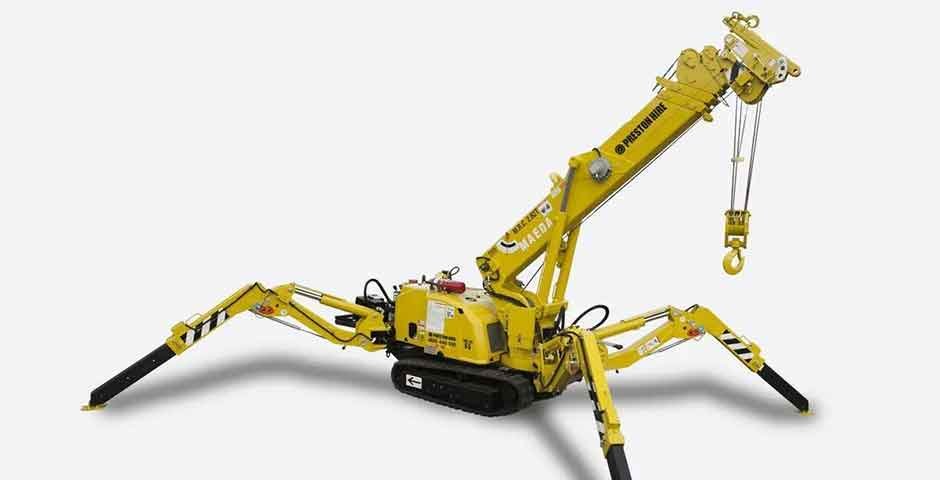Spider cranes are a type of lifting equipment commonly used in construction sites due to their compact size, maneuverability, and ability to access tight spaces. While they offer several advantages over larger cranes, they also have limitations to consider when working with them.
Understanding these limitations is essential to ensure that spider cranes are safe and effective in construction projects. Therefore, this article will explore the limits of working with spider cranes and how they can affect construction operations.
What Are Spider Cranes, And Where Are they Mostly Used?
Spider cranes are versatile lifting equipment, ideal for construction and industrial applications where space is at a premium. With their telescoping boom and the ability to “walk” on four or more legs, spider cranes can access tight spaces that larger cranes cannot.
It makes them particularly useful for projects that require lifting in confined areas or locations with limited access. Spider cranes are primarily used in construction and industrial applications where space is limited, or access is difficult. Some of the most common applications for spider cranes include:
- Interior construction projects:Spider cranes can lift materials and equipment in restricted spaces such as elevators, stairwells, or hallways.
- Urban construction sites:In densely populated urban areas, space is often at a premium, making spider cranes an ideal lifting solution.
- Power plant construction:Spider cranes can lift heavy equipment or components in power plants where access is difficult.
- Bridge construction:These cranes can lift and move materials during bridge construction or maintenance projects.
- Glass installation:They are used to install glass panels in high-rise buildings or other locations where access is limited.
What Are the Limitations Of Working With Spider Cranes?
Limited Lifting Capabilities:
When considering crane hire, one of the main drawbacks of spider cranes is their limited lifting capacity. This is due to their unique design, which features a smaller size and four legs.
While this design makes them highly maneuverable and able to access tight spaces, it also means that they are less suitable for applications where heavy lifting is required. The lifting capacity of a spider crane will depend on its specific model, but in general, they are designed for lighter loads than bigger cranes.
Easily Affected By High Winds:
Due to their unique four-legged design, they are inherently less stable than more giant crawler cranes and can be affected by wind gusts. This means that spider cranes may not be the best option for crane hire in areas where high winds are a factor.
While spider cranes are designed to be highly maneuverable and able to operate in tight spaces, they are not as stable as larger cranes with a broader base. However, with proper planning and preparation, it’s possible to use spider cranes effectively in areas with moderate wind conditions.
Using spider cranes in various construction and industrial applications is possible by assessing the wind conditions and taking appropriate safety measures.
Restricted Reach Capabilities:
Another limitation of spider cranes is their limited reach due to their shorter boom. This means that they have a shorter reach than larger cranes, which can be disadvantageous in applications where the load must be lifted from a distance. While spider cranes are highly maneuverable and can access tight spaces, their limited reach can be a drawback in some scenarios.
For example, a larger crane with a longer reach may be required in construction projects that require lifting materials onto higher floors or roofs. In such cases, spider cranes may not be the best option for crane hire. However, spider cranes can be highly effective for projects requiring lifting in confined spaces or at shorter distances.
It’s essential to consider the specific requirements of a project when selecting the appropriate crane for hire. Factors such as load weight, lifting distance, and site conditions should all be considered. By assessing these factors and selecting the proper crane, it’s possible to ensure safe and efficient lifting operations on construction and industrial sites.
Final Words
Spider cranes offer many advantages, such as their maneuverability and ability to operate in tight spaces, but their use has some limitations. Despite these limitations, these cranes remain valuable for various construction and industrial applications.
By carefully assessing the specific requirements of a project and selecting the appropriate crane for hire, it’s possible to ensure safe and efficient lifting operations on construction and industrial sites. Overall, while spider cranes may not be suitable for all applications, they offer a unique set of capabilities that can be highly effective in the right circumstances.






